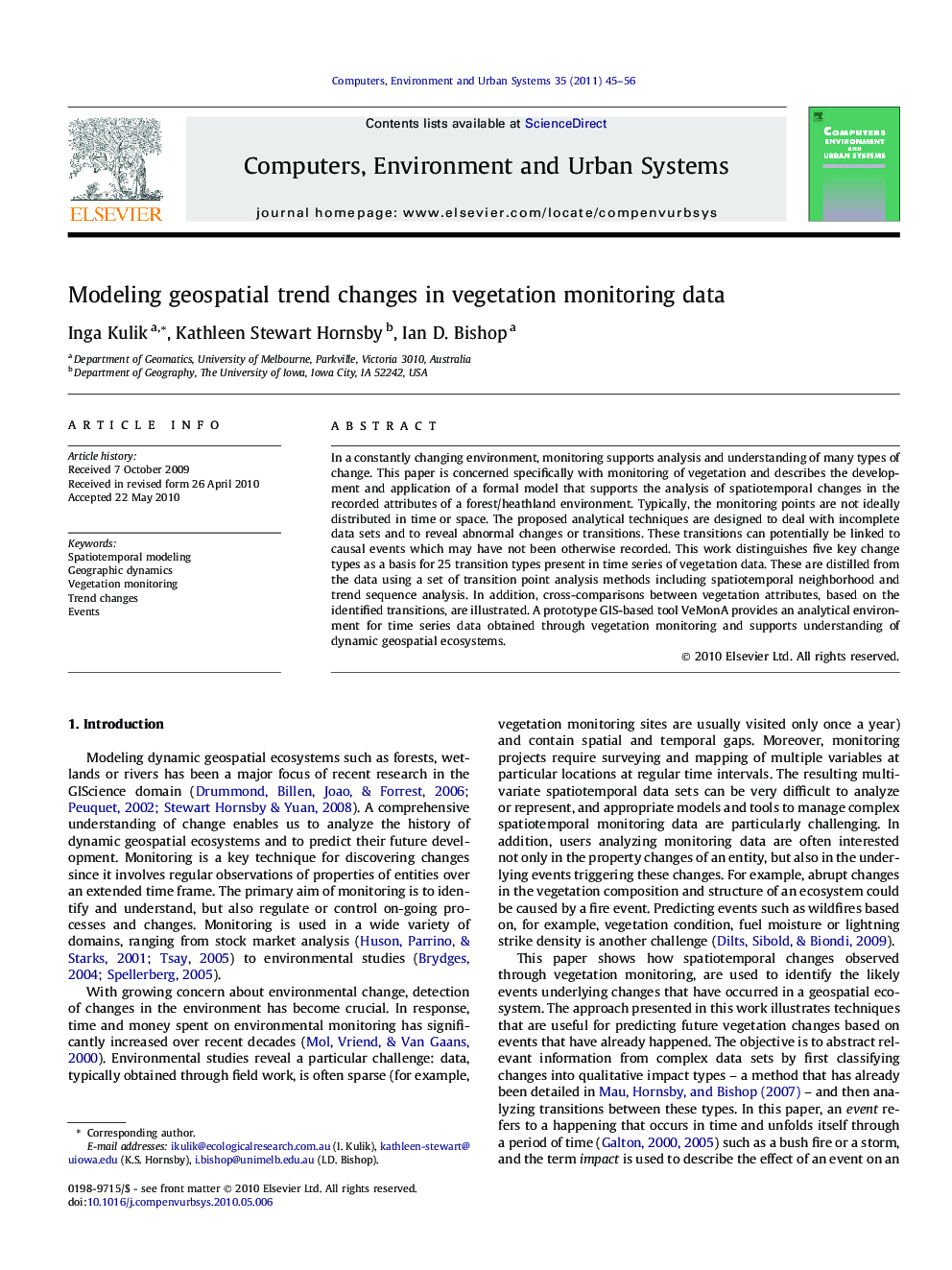| Article ID | Journal | Published Year | Pages | File Type |
|---|---|---|---|---|
| 506692 | Computers, Environment and Urban Systems | 2011 | 12 Pages |
In a constantly changing environment, monitoring supports analysis and understanding of many types of change. This paper is concerned specifically with monitoring of vegetation and describes the development and application of a formal model that supports the analysis of spatiotemporal changes in the recorded attributes of a forest/heathland environment. Typically, the monitoring points are not ideally distributed in time or space. The proposed analytical techniques are designed to deal with incomplete data sets and to reveal abnormal changes or transitions. These transitions can potentially be linked to causal events which may have not been otherwise recorded. This work distinguishes five key change types as a basis for 25 transition types present in time series of vegetation data. These are distilled from the data using a set of transition point analysis methods including spatiotemporal neighborhood and trend sequence analysis. In addition, cross-comparisons between vegetation attributes, based on the identified transitions, are illustrated. A prototype GIS-based tool VeMonA provides an analytical environment for time series data obtained through vegetation monitoring and supports understanding of dynamic geospatial ecosystems.
